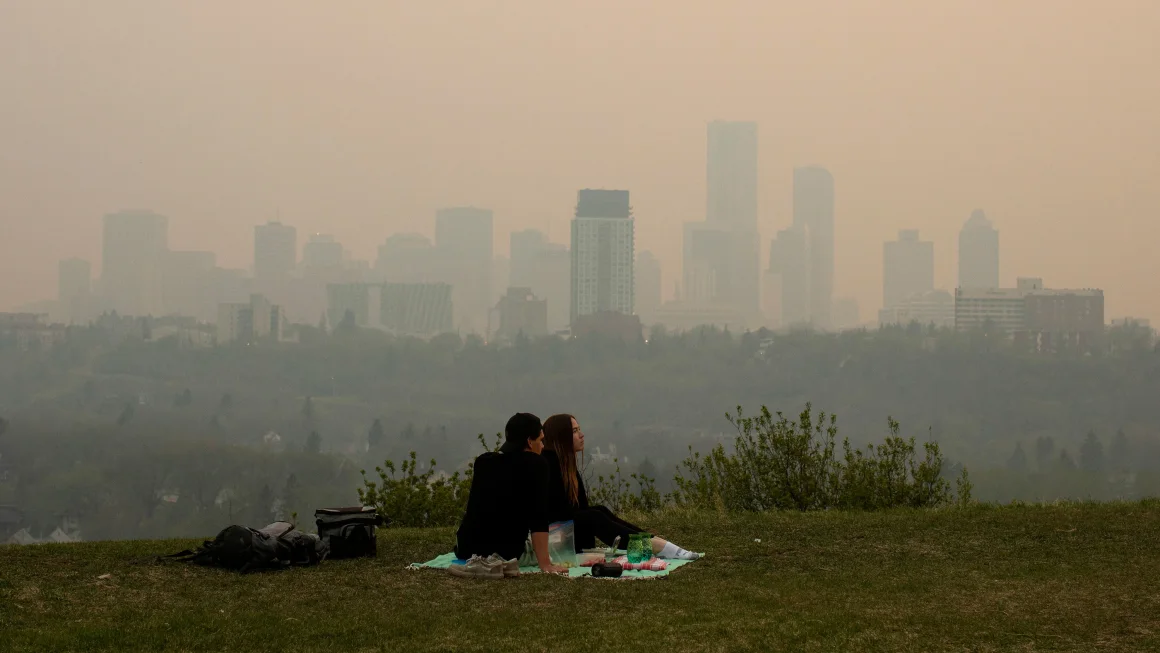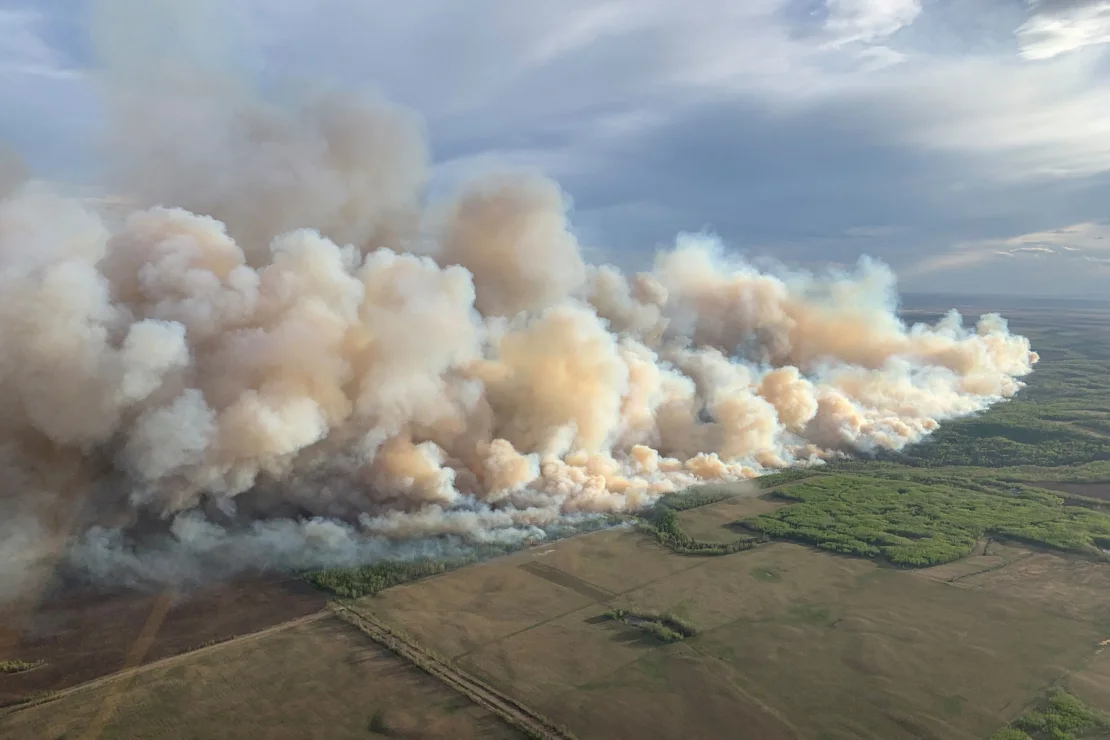An out-of-control fire exhibiting “extreme fire behavior” is threatening to overrun a small Canadian community as the country’s wildfire season explodes to early life for the second consecutive year.
The Parker Lake Fire in northeastern British Columbia more than tripled in size over the weekend to 13,000 acres and is now on the doorstep of the small community of Fort Nelson. Gusty winds are expected to push the fire toward the community through the day Monday.
“Our current fire behavior projections show the community of Fort Nelson may be impacted during the morning of May 13,” Ben Boghean, Fire Behavior Specialist for the BC Wildfire Service, said in a Sunday Facebook update. It’s unclear how far the fire has advanced since the update.
Some 3,200 residents in northeastern British Columbia were under an evacuation order Saturday afternoon as the Parker Lake fire raged on. About 2,800 residents from the Northern Rockies Regional Municipality and about 450 residents from the Fort Nelson First Nation were asked to evacuate.
“If you are still in Fort Nelson, or anywhere in the evacuation order of the Parker Lake wildfire, I encourage you to leave,” Cliff Chapman, BC Wildfire service director of provincial operations, said in the Sunday update. “The fuels are as dry as we have ever seen. The wind is going to be sustained and it is going to push the fire toward the community. Escape routes may be compromised and visibility will be poor as the fire continues to grow.”
Jaylene MacIver, Northern Rockies regional municipality information officer, told CNN “there has generally been good compliance,” though some residents chose to remain in place.
More than 90% of the approximately 450 residents of Fort Nelson First Nation evacuated the area, the emergency operations director Terry Cavaliere told CNN.
Extremely dry conditions and winds gusting up to 25 mph are driving the fire Monday, but the seeds of fire activity were sown over the winter and in past years as the world continues to warm because of human-driven climate change.
“This region has experienced multiple years of drought, with a below normal snowpack this past winter,” Boghean said. “As a result of this, our forests in the Fort Nelson zone are very receptive to new fire ignitions and rapid rates of spread.”
Declining snow, increasing temperatures and worsening droughts are all hallmarks of climate change and are projected to keep driving larger and more intense fires across Canada, according to Environment Canada.
Last year was Canada’s most devastating fire season on record, including in British Columbia, where fires burned through hundreds of homes and an area the size of Maryland, according to the BC Wildfire Service.
The Parker Lake Fire is not alone. There are more than 100 fires burning across Canada, 39 of which are considered out of control, according to the Canadian Interagency Fire Centre.
Evacuation alerts are also in place for parts of Alberta as the MWF-017 wildfire burns out of control near Fort McMurray in the northeastern area of the province, officials said. The fire had burned about 16,000 acres as of Sunday morning.
Hazardous smoke creeps into the US
Smoke from the infernos has caused Environment Canada to issue a special air quality statement extending from British Columbia to Saskatchewan.
It has also caused smoke to waft down into the northern tier of the US for the first time this year, and for air quality alerts to be issued for Wisconsin and Minnesota. Air quality reached “unhealthy” levels in southern Minnesota Monday morning, including Minneapolis-St. Paul, according to AirNow.gov.
Particulate matter levels this high can cause issues for sensitive groups or anyone spending prolonged time outdoors, according to the Environmental Protection Agency. Wildfire smoke has been linked to increases in certain cancers and heart-related issues, among other ailments.
Just last year, Canadian wildfires made their way to parts of the United States and caused dangerous air conditions across the country. In 2023, 19 counties in 11 states had days with “very unhealthy” and “hazardous” air quality — given at least a “code purple” alert on the US Environmental Protection Agency’s Air Quality Index.
Air quality conditions are expected to improve in the US through the day Monday, but linger in parts of Canada closer to the fires, including Alberta and British Columbia.
Canadian officials warned those at higher risk of experiencing health effects from wildfire smoke include people with lung disease such as asthma, people with heart disease, along with older adults, children, those who are pregnant and people who work outdoors. They also recommended those who spend time outdoors wear a mask to help reduce exposure to fine particles of smoke.
Residents in Alberta prepare to evacuate
Evacuation alerts are also in effect for parts of Alberta as wildfire MWF-017 burns about 10 miles southwest of Fort McMurray, according to a statement from the Regional Municipality of Wood Buffalo. The alerts were active in Fort McMurray, Saprae Creek Estates, Gregoire Lake Estates, Fort McMurray First Nation #468, Anzac and Rickards Landing Industrial Park.
“Although there is no immediate risk to these communities, the alert ensures residents are prepared to evacuate if conditions change,” the statement said.
Light rain showers were expected overnight Sunday with more rain forecast Monday, “which will help lower fire activity,” a Sunday update from Alberta Wildfire said. “This will give firefighters a good window to continue making progress on containing the fire,” it said.
“Two night vision helicopters will work overnight to drop water on the fire with their buckets,” the update said.
Crews made progress in establishing a fireguard on the northeast side of the fire Sunday, officials said.
Fire restrictions will remain in effect in the area until conditions improve, according to Alberta Wildfire.

